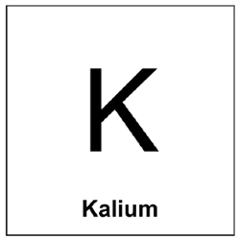Kalium: a reactive framework for micro-services
Kalium in neo-latin is the word for Pottasium- the chemical element of atomic number 19, a soft silvery-white reactive metal of the alkali metal group.
What is Kalium?
Kalium is a framework that makes it easier for micro-services asynchronously to interact with each other.
Here's an example in Java. Let's assume we have an e-commerce site that accepts payments and sends receipts to customers. Upon checkout, a customer is sending a Payment. Once the Payment is processed, a Receipt needs to be sent to the customer.
For scale purposes, we assume payments are processed on one micro-service, while receipts are produced and sent from different micro-services.
Here is how we would use Kalium to help us with these data flows.
Processing a payment
public class PaymentProcessor {
...
@On
public void processPayment(Payment payment) {
if(!payment.isProcessed()) {
// Do something with the payment, e.g. call Stripe to make the actual payment
payment.processed = true;
kalium.post(payment);
}
}
}
Preparing a receipt
public class ReceiptProducer {
...
@On
public void prepareReceipt(Payment payment) {
if(payment.isProcessed()) {
//convert processed payment into receipt
Receipt newReceipt = converPaymentToReceipt(payment);
kalium.post(newReceipt);
}
}
}
Emailing a receipt to a customer
public class ReceiptMailer {
...
@On
public void sendReceipt(Receipt receipt) {
//send the receipt, e.g. convert it to HTML and send it with SendGrid
prepareReceiptEmailAndSend(receipt);
receipt.sent = true;
kalium.post(receipt);
}
}
How Kalium works?
Behind the scenes, Kalium is using existing queue technology as a scalable event bus. Kalium uses the @On annotations to define out-of-the-box serializer/de-serializer for the event classes. The object type of the paramater of the annotated method, is used as the topic in the underlying queue.
Currently, Kalium is supporting Java, and can only be used with Apache Kafka as the underlying event bus. However, it is planned to have an implementation for other languages like Javascript and Python and to be used with AWS Kinesis as well.
Adding Kalium to your build
Kalium's Maven group ID is io.alkal and its artifact ID is kalium-kafka. To add a dependency on On using Maven, use the following:
<dependency>
<groupId>io.alkal</groupId>
<artifactId>kalium-kafka</artifactId>
<version>0.0.1</version>
</dependency>
To add a dependency using Gradle:
dependencies {
compile 'io.alkal:kalium-kafka:0.0.1'
}
Quick start
Sending Hello object between services
public class Hello {
private String value;
public Hello(String value) {
this.value = value;
}
public String getValue() {
return value;
}
}
Service 1 - greeter
public class Greeter {
public static void main(String[] args) {
Kalium kalium = Kalium.Builder()
.setQueue(new KaliumKafkaQueueAdapter("localhost:9092"))
.build();
kalium.start();
Hello hello = new Hello("world");
kalium.post(hello);
}
}
Service 2- printing greeting on another service
public class HelloPrintingService {
public static void main(String[] args) {
Kalium kalium = Kalium.Builder()
.setQueue(new KaliumKafkaQueueAdapter("localhost:9092"))
.build();
kalium.addReaction(new HelloReaction);
kalium.start();
}
}
public class HelloReaction{
@On
public void printHello(Hello hello) {
System.out.println("Hello " + hello.getValue());
}
}
contact me: ziv@alkal.io


